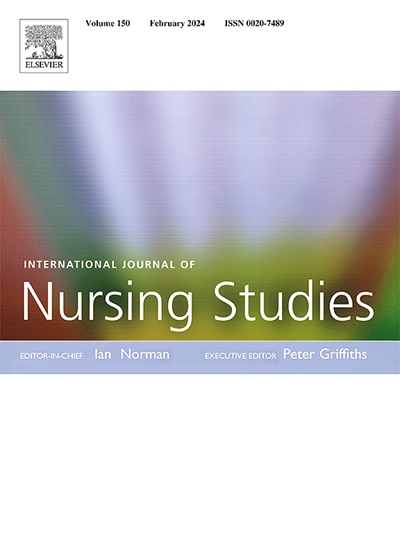High specificity clinical signs of impending death: A scoping review
IF 7.5
1区 医学
Q1 NURSING
引用次数: 0
Abstract
Background
Accurate diagnosis of impending death is essential to provide proper care in the last days and hours of life. Recognising the death situation immediately allows adjustment of care goals, ensuring that they suit the patient's condition, as well as tuning the team's and family's expectations.
Objective
To map and describe evidence on high specificity clinical signs of impending death in cancer and noncancer hospitalised patients over 18 years of age.
Methods
A comprehensive search of the published literature was conducted According to Joanna Briggs Institute's methodology for scoping reviews. Online databases, including MEDLINE, CINAHL complete, SCOPUS, WEB OF SCIENCE, and the Cochrane Database of Systematic Reviews, and the search for unpublished studies included OpenGrey, DART-Europe, and RCAAP. Publications in English, French, Portuguese, and Spanish were included, and no period was set. The Preferred Reporting Items for Systematic Reviews and Meta-Analysis extensions to scoping review guidelines were used to report the results. The review protocol was registered in Open Science Framework (Simões et al., 2022).
Results
The 15 studies included in this review were published in English between 2013 and 2023. In addition to identifying the clinical signs of impending death, some researchers intend to develop accurate prognostic models for this clinical situation. Only two studies in the noncancer population met the inclusion criteria. Twelve articles were prospective observational studies (seven were multicentre studies), one was a retrospective cohort study, and two were narrative reviews. A clinical sign that is common to studies in both populations is respiration with mandibular movement, particularly in the last 12 h of life.
Conclusions
Clinical signs of impending death and prediction models can help clinicians identify impending death. However, they should not replace clinical judgement. Further research is required to understand whether the dying process differs among different patient populations and care settings.
求助全文
约1分钟内获得全文
求助全文
来源期刊
CiteScore
15.00
自引率
2.50%
发文量
181
审稿时长
21 days
期刊介绍:
The International Journal of Nursing Studies (IJNS) is a highly respected journal that has been publishing original peer-reviewed articles since 1963. It provides a forum for original research and scholarship about health care delivery, organisation, management, workforce, policy, and research methods relevant to nursing, midwifery, and other health related professions. The journal aims to support evidence informed policy and practice by publishing research, systematic and other scholarly reviews, critical discussion, and commentary of the highest standard. The IJNS is indexed in major databases including PubMed, Medline, Thomson Reuters - Science Citation Index, Scopus, Thomson Reuters - Social Science Citation Index, CINAHL, and the BNI (British Nursing Index).

 求助内容:
求助内容: 应助结果提醒方式:
应助结果提醒方式:


